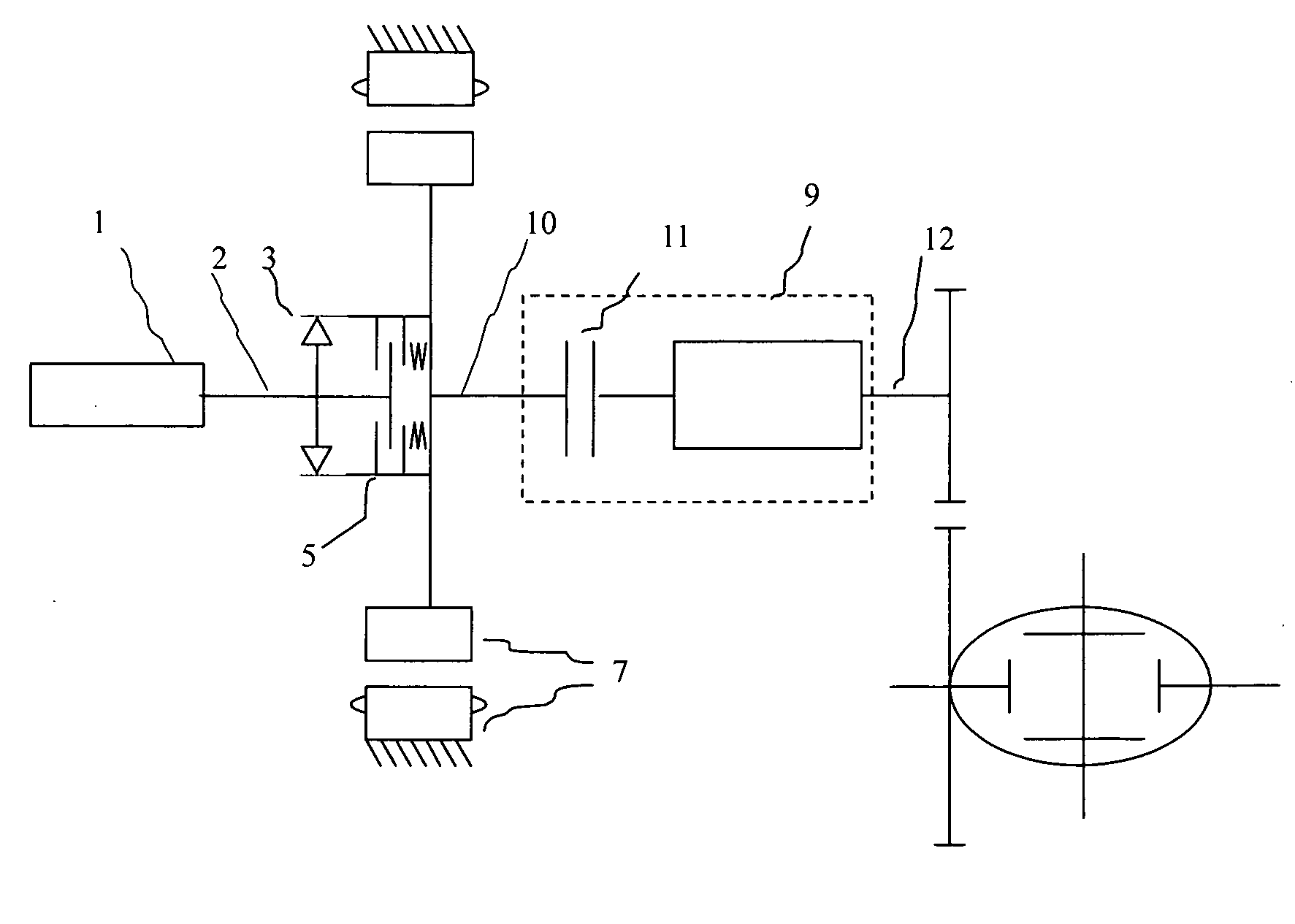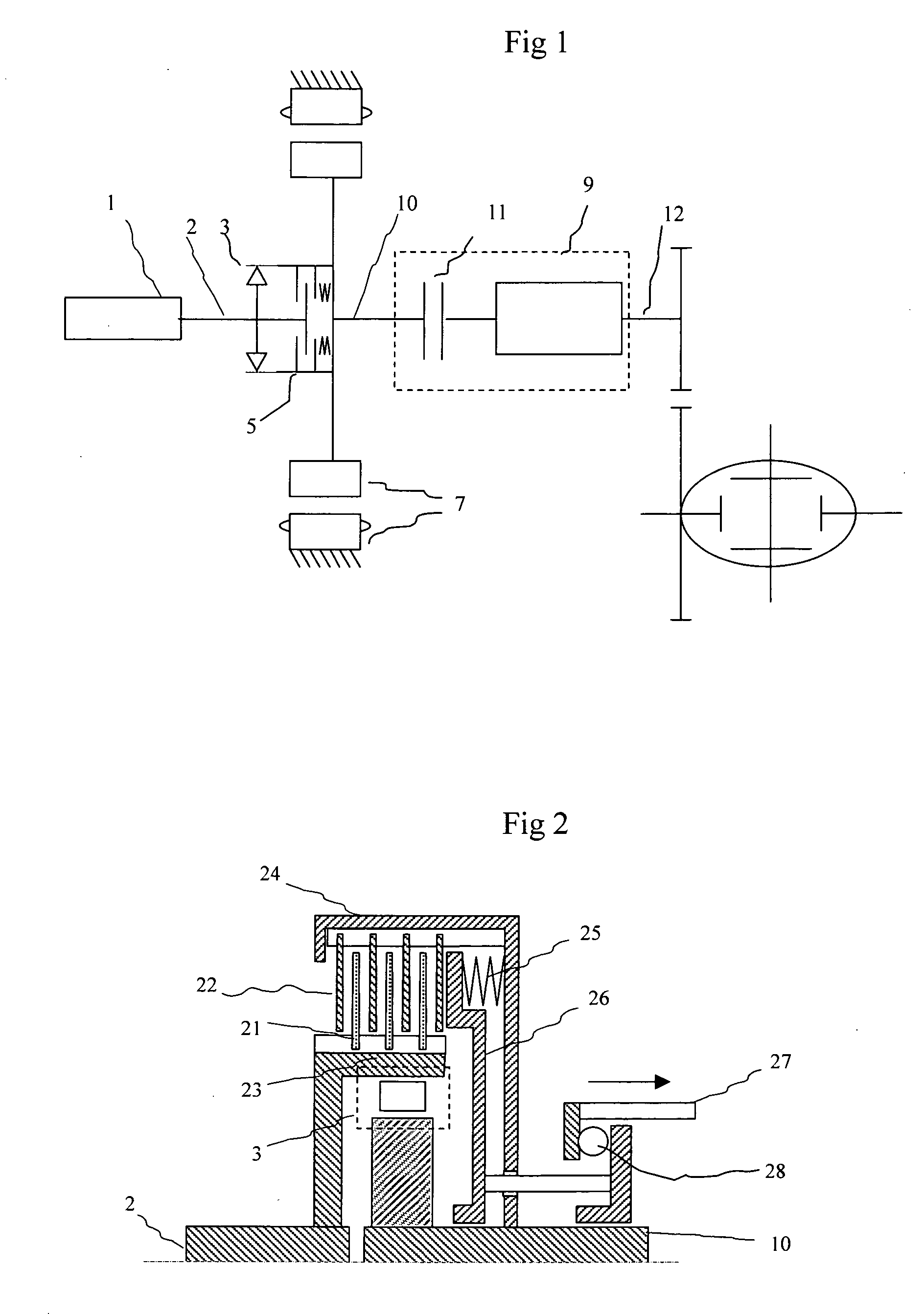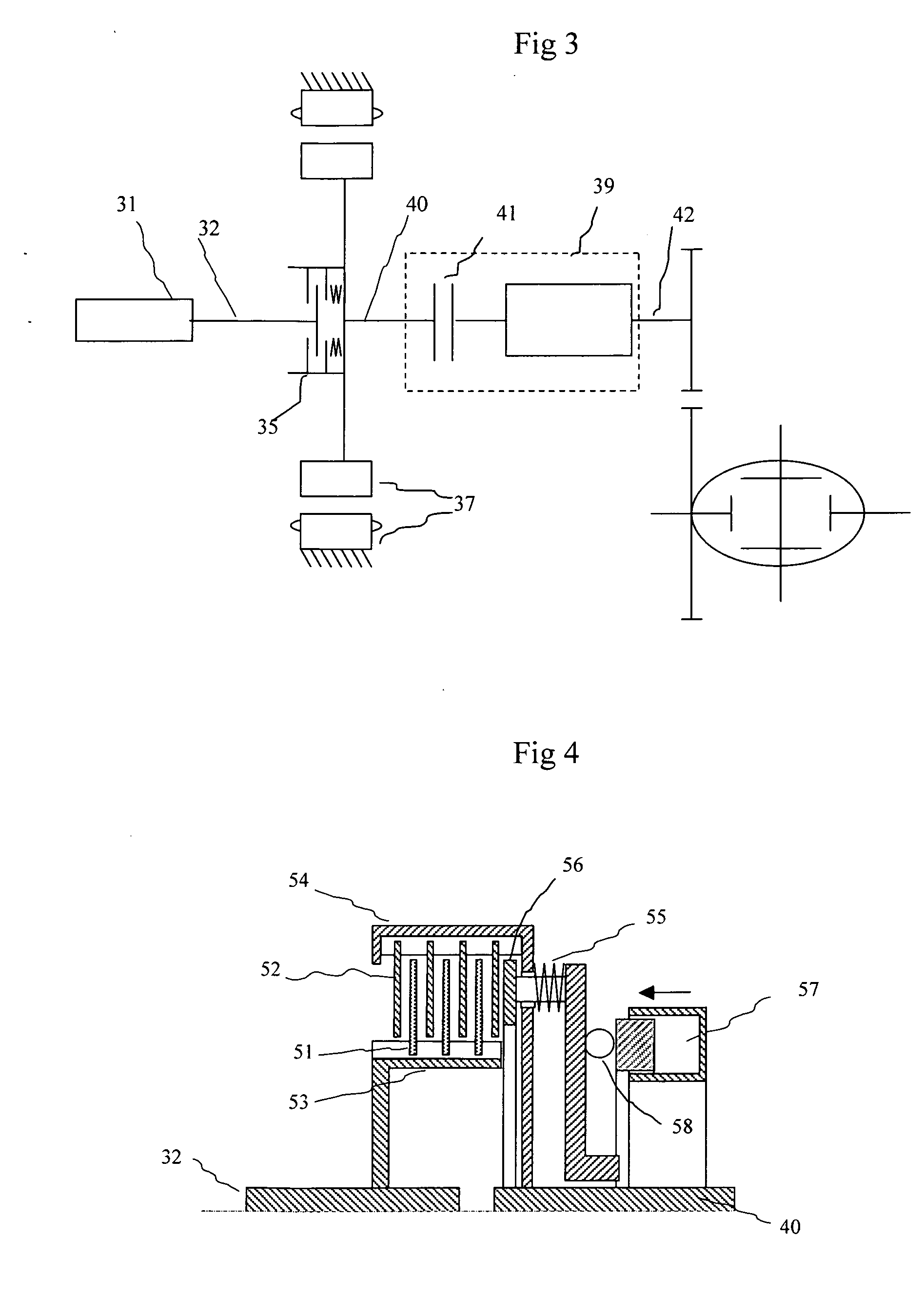Hybrid electric vehicle
a hybrid electric vehicle and electric motor technology, applied in the direction of propulsion parts, electric propulsion mounting, transportation and packaging, etc., can solve the problems of wasting energy, wasting energy, and wasting energy, so as to achieve the effect of quickly and smoothly starting the engin
- Summary
- Abstract
- Description
- Claims
- Application Information
AI Technical Summary
Benefits of technology
Problems solved by technology
Method used
Image
Examples
first preferred embodiment
[0027]FIG. 1 shows the schematic view of a hybrid electric drive system according to a first preferred embodiment of the present invention. The hybrid electric drive system comprises: a heat engine 1 with an output shaft 2, a one-way-clutch 3, a torque-limiting device 5, an electric motor 7, and a transmission 9.
[0028]Engine 1 converts fuel energy into mechanical energy and outputs torque through engine shaft 2.
[0029]Motor 7 can convert the electric energy from a set of power battery (not shown) into mechanical energy and outputs torque through a motor shaft 10. It can also output braking torque during deceleration and, at the same time, recover the kinetic energy of the vehicle into electric energy for the battery to store.
[0030]Transmission 9 has an input shaft connected to motor shaft 10 and an output shaft 12, and output shaft 12 is connected to vehicle's wheels.
[0031]One-way-clutch 3 is disposed between engine shaft 2 and motor shaft 10, and it can transmit forward torque from ...
second preferred embodiment
[0047]FIG. 3 shows the schematic view of a hybrid electric drive system according to a second preferred embodiment of the present invention. The hybrid drive system comprises: a heat engine 31 with an output shaft 32, a torque-control device 35, an electric motor 37, and a transmission 39.
[0048]Engine 31 converts fuel energy into mechanical energy and outputs torque through engine shaft 32.
[0049]Motor 37 can convert the electric energy from a battery (not shown) into mechanical energy and outputs torque through a motor shaft 40. It can also output braking torque during deceleration and, at the same time, recover the kinetic energy of the vehicle into electric energy for the battery to store.
[0050]Transmission 39 has an input shaft connected to motor shaft 40 and an output shaft 42, and output shaft 42 is connected to vehicle's wheels.
[0051]Torque-control device 35 selectively disengages, partially engages and fully engages engine shaft 32 with motor shaft 40.
[0052]When torque-contro...
PUM
 Login to View More
Login to View More Abstract
Description
Claims
Application Information
 Login to View More
Login to View More - R&D
- Intellectual Property
- Life Sciences
- Materials
- Tech Scout
- Unparalleled Data Quality
- Higher Quality Content
- 60% Fewer Hallucinations
Browse by: Latest US Patents, China's latest patents, Technical Efficacy Thesaurus, Application Domain, Technology Topic, Popular Technical Reports.
© 2025 PatSnap. All rights reserved.Legal|Privacy policy|Modern Slavery Act Transparency Statement|Sitemap|About US| Contact US: help@patsnap.com



